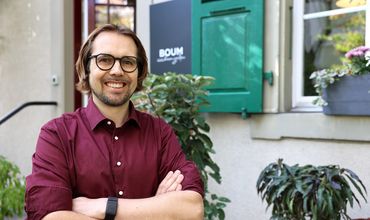Start-ups use patents to protect technical solutions to technical problems. As well as protecting inventions, patents are also a major selling point in negotiations with investors. Potential backers want to know what (protected) innovations the start-up has to offer. According to a study by the European Patent Office, start-ups with patent and trade mark rights are ten times more likely to secure funding. It’s therefore a bitter pill for an ambitious company to swallow if it loses out on a patent because of its actions.
For IP professionals
This is the portal for professionals working in the field of intellectual property. Here you'll find direct access to all necessary resources.
Quick links
News
20.02.2025 | Law and policy, Copyright
AI regulation in Switzerland: Federal Council chooses a sectoral approach
...more
Keep quiet if you want a patent
Does your start-up want to patent an invention? Then keep quiet about it! If you don’t, you’ll put your application at risk. We explain how to avoid this scenario.

The problem – blog posts and YouTube videos
An invention has to be new when it’s filed with the patent office. Any innovation that is publicly available worldwide from the day before the filing is no longer considered new. It belongs to what’s known as the ‘state of the art’. If a start-up makes a technical solution public in detail on a blog, on YouTube or in any other format before filing a patent application, the invention is already outdated on filing – and can no longer be patented. It doesn’t matter where or how it’s been published – newspaper ads, essays and presentations count too. This conduct is technically referred to as ‘prejudicial to novelty’, which means that the inventor destroys the novelty of an invention by publishing it prematurely.
However, it is possible to disclose an intention or a technical problem if the content and technical details are vague. It’s advisable to discuss this with a patent attorney in good time before filing an application.
What counts as ‘public’?
The key question is whether an invention is made available to the public. For this to be true, all that matters is that it’s possible for someone to find out about it. Even a loud conversation with friends in a restaurant can be considered as ‘publication’ if somebody happens to be listening in.

The solution – keep quiet before filing and use contracts
Secrecy is key, even if a company is dying to talk about its amazing discovery. It’s important to be patient. The talking can start as soon as the invention has been filed.
1. Silence is golden: The invention should be kept secret until the patent application is filed. Start-ups shouldn’t write anything about their invention in journals or on the internet, or present it at an exhibition.
2. Pitching the invention: Before filing a patent application, start-ups are often in contact with other companies and investors. In such cases, the other party should sign a non-disclosure agreement (NDA) before talks or presentations. As well as that, it’s important not to explain the technology in detail, but just as much as is necessary. Show the solution, not the process behind it. If you’re working with a workshop or an engineering office, you should also have them sign an NDA beforehand.
3. Get answers – is my invention new? Before filing, innovators need answers to certain questions about their invention. For example: is another company using a similar innovation? Is the invention even new? An Assisted Patent Search will provide answers to these questions and more. The search also serves as a source of inspiration and offers insights into the industry in question.
4. Get support: Experts are available to answer any questions you may have. The IPI provides start-ups with basic information about protecting intellectual property. And in our IP Advisory Network, you can find a list of patent attorneys that provide initial 45-minute consultations free of charge.

To sum up, keep the invention secret, keep calm and think about the next steps.




